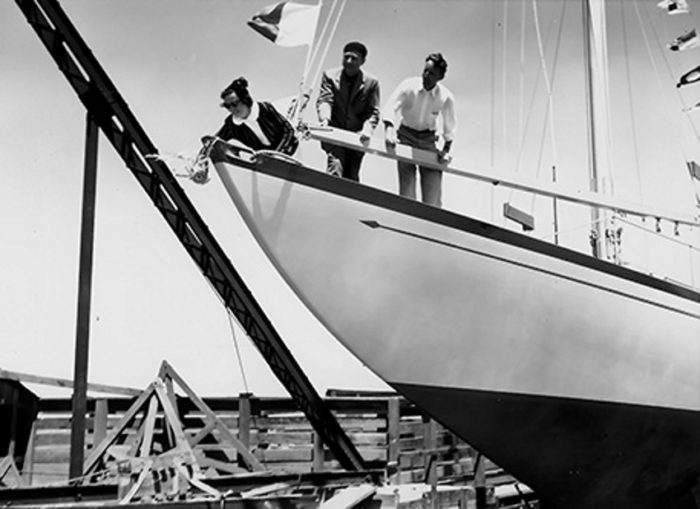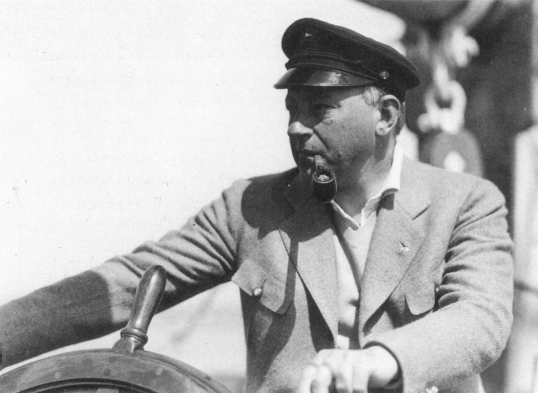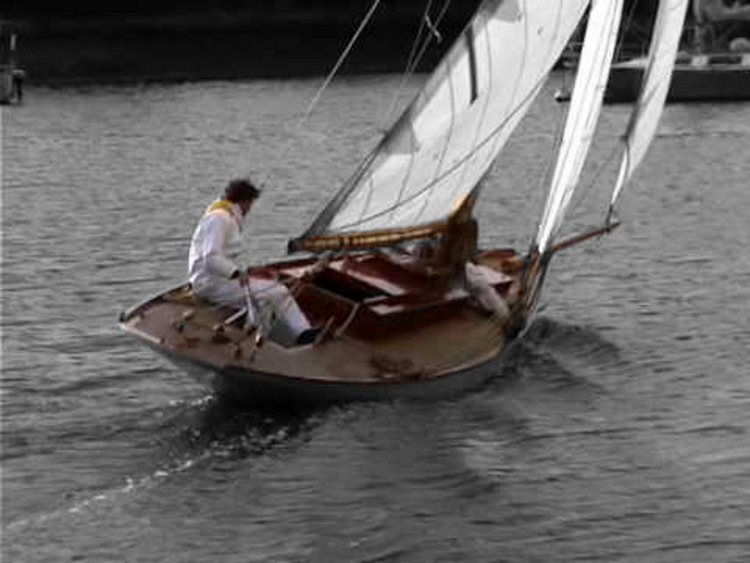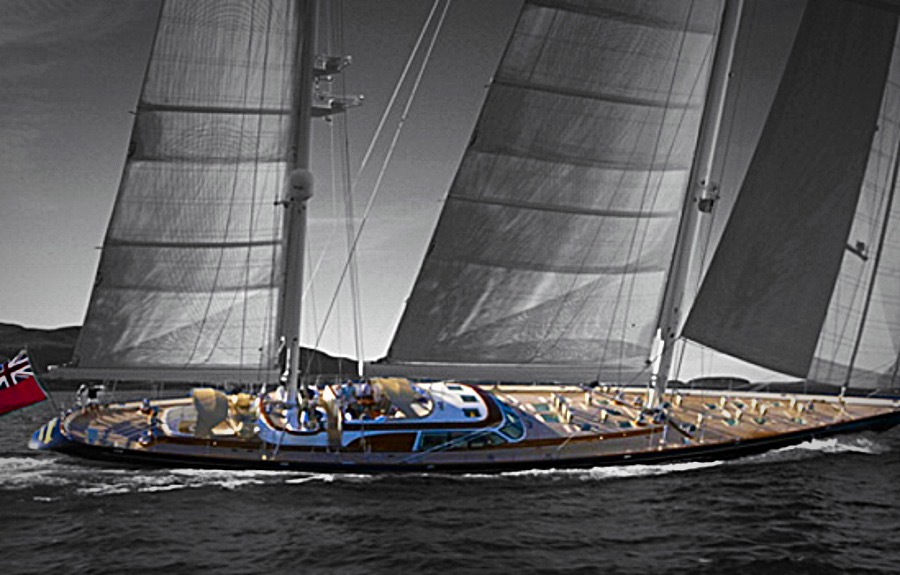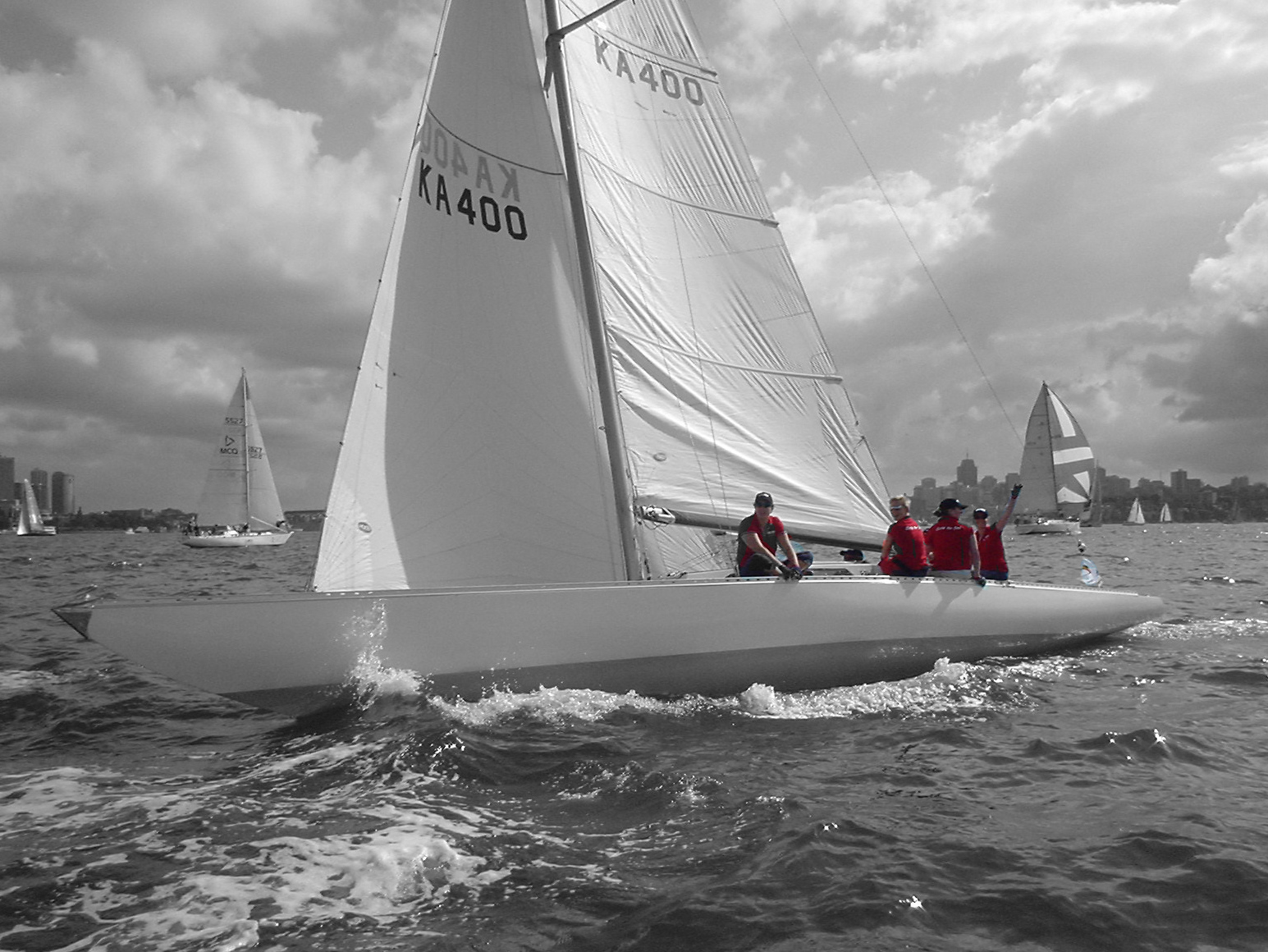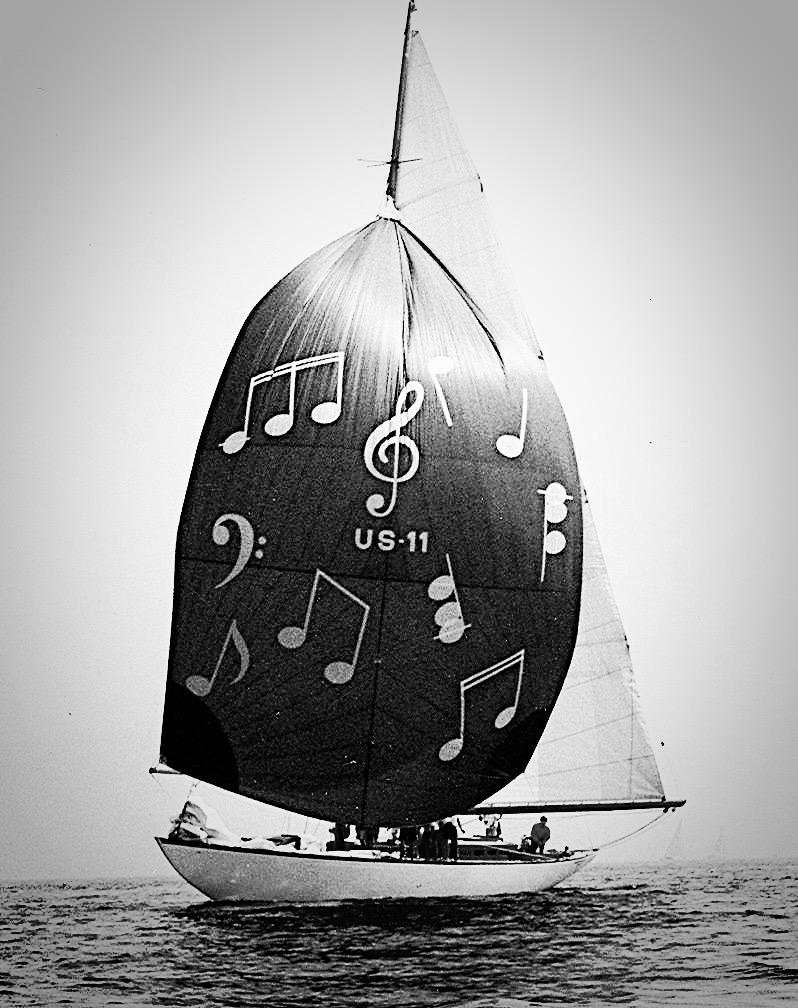
Sail Number: N / US-11
Type: N-Class
Potter “Serenade” Specifications:
LOA: 62′0″/ 18.90m – LOD: 62′0″/ 18.90m – LWL: 40′0″/ 12.20m – Beam: 13′1″/ 4.00m – Draft: 8’4″ / 2.54m – Displacement: 23 tons – Sail Area: ft² / m² – Designer: Nicholas Potter – Built by: Wilmington Boatworks, CA (Wilbo) – Original Owner: Jascha Heifetz, Catalina Island Yacht Club. – Current Owner: Private – Original Name: SERENADE – Year Built: June 2, 1938 – Engine: Yanmar 4JH3THE 96 HP – Boat Location: Bouches-du-Rhône (France)
Historical

Jascha Heifetz, many considered him the greatest violinist of the 20th century. Heifetz owned the 1714 Dolphin Stradivarius, the 1731 “Piel” Stradivarius, the 1736 Carlo Tononi, and the 1742 ex David Guarneri del Gesù. Jascha with one of his Stradivarius’ locked safely away onboard, raced in the 1938 Transpacific on his N-Class sloop SERENADE, with Humphrey Bogart as crew.
Jascha Heifetz, widely regarded as one of the greatest performing artists of all time, was born in Vilnius, Lithuania, which was then occupied by Russia, on February 2, 1901.. He began playing the violin at the age of two. He took his first lessons from his father Ruvin, and entered the local music school in Vilna at the age of five where he studied with Ilya Malkin. He made his first public appearance in a student recital there in December 1906, and made his formal public debut at the age of eight in the nearby city of Kaunas (then known as Kovno, Lithuania). With only brief sabbaticals, he performed in public for the next 65 years, establishing an unparalleled standard to which violinists around the world still aspire….more
A little known ambition in the life of Jascha Heifetz became known to those working with him at Samuel Goldwyn studios when the world’s greatest violinist disclosed that he had entered his yacht SERENADE in the grueling race to Hawaii in 1939. The race, which is biannual and scheduled to start on July 4, 1939, is the longest regularly established yacht contest. The course is from San Pedro Light to Diamond Head Light, a distance, as the crow flies, of approximately 2,400 miles. Heifetz had recently completed work in his first picture, “The Restless Age,” will skipper the vessel himself, with an amateur crew.
Sandeman comments – SERENADE was designed by American West Coast sailboat designer Nicholas Potter, who working from the late 1920s through the late 40s; is often known as the “‘Herreshoff of the West.’ Commissioned by the famous Lithuanian violinist Jascha Heifetz, she built by Wilmington Boatworks California for the 1938 Trans Pacific Yacht Race (Los Angeles to Honolulu) the longest of the two oldest ocean races in the world. Other celebrity owners have included the Cousteau family and Zsa Zsa Gabor. Donald Douglas Sr. of aircraft building fame often skippered her when he was not sailing his own Potter M class yacht. SERENADE is noted in the Nicholas Potter entry of the Encyclopaedia of Yacht Designers by Lucia del Sol Knight and Daniel B. MacNaughton. A note on Nicholas Potter; he had willed that his boat plans be destroyed by burning. In the case of SERENADE however there is a surviving plan.
Owners comments: There are no sail tracks on the boat as we use the fact she has two tack downhauls to position the lead. This combined with several leads on the deck enable us not to have a genoa track; the original did not have either. She has lazy jacks for easier sail handling. The original wire reel halyard winch has been removed (but kept in storage) so that we can use a self tailing Bronze Lewmar. The original owners – the Heifetz family – wanted to achieve that difficult combination in a yacht: a competitive race boat while at the same time a comfortable cruising boat for the family, all packaged in an attractive shape. In order to take advantage of the active racing fleets on the West Coast, he specified that the boat be built using the Universal Rule as an NClass racing sloop. Other boats of that class included the Herreshoff NY 40s. He also specified that the boat be able to accommodate guests properly and so the boat has 6 feet of headroom throughout. In addition, a separate guest cabin was configured which is unusual for a boat her size. When cruising short-handed, she is sailed with an original configured self-tacking jib. The boat was originally configured with two headstays: one for the self-tacking jib which is regularly hanked on, and the other one ready for any headsail change. This insured that the boat is not sailed bald-headed. While this is convention today, it was not the case in 1938. In addition, she has 2 spinnaker poles – the spinnaker pole attachments on the mast are off centre. This was to accommodate the fact that the Transpac is largely a reach as in many offshore races. As a result, SERENADE gybes her large spinnaker by simply raising the new spinnaker pole to meet the new luff. In effect, you gybe with two spin poles rather than the dip pole gybe. Finally, in an effort to take every precaution regarding his “insured” hands, all sheets were led to the middle of the boat. Thomas Skahill, the noted West Coast yacht historian notes that Elsa Potter tells of a race in which she was aboard along with Florence Heifetz, who cautioned her husband to be careful setting up a running backstay. He replied that each finger was insured for one million dollars!
Provenance (The Wall of Remembrance – The Owners, Crew & Notable Guest):
- Owner/Guardian: (1938) – Jascha Heifetz
- Captain: (1938) – Mel Beatty
- Crew: George Hoag II
- Actor: Sailing Friend: Humphrey Bogart
- Owner/Guardian: Charles Isaacs (Wife Hungarian actress Eva Gabor)
- Owner/Guardian: (1975) – Philippe Cousteau
- Owner/Guardian: Philip Kaminis, Beverly Hills,
California - Captain Mike and Cathy Lewis
- Captain: (1985) – Dave Topping
- Owner/Guardian: Glenn Kim
Resources
Sandeman Yacht Company: http://www.sandemanyachtcompany.co.uk/
Jascha Heifetz website: http://www.jaschaheifetz.com
LA Times: https://www.latimes.com/

